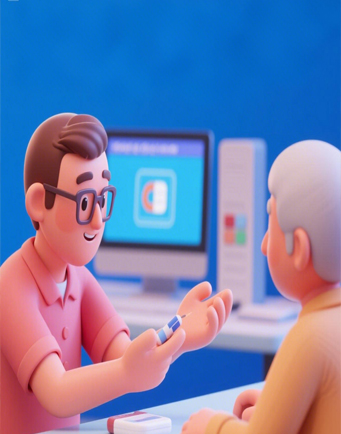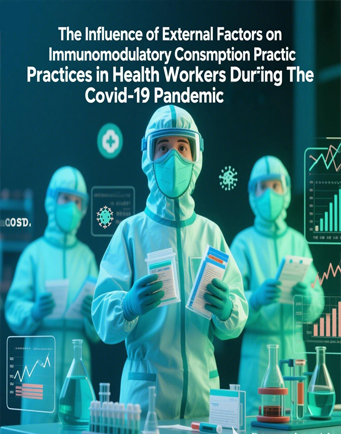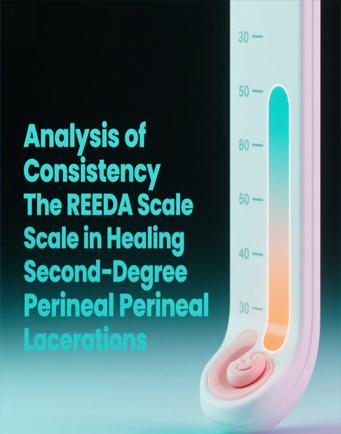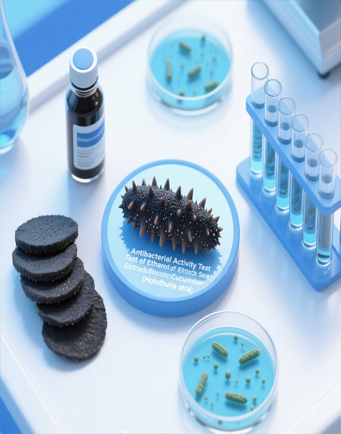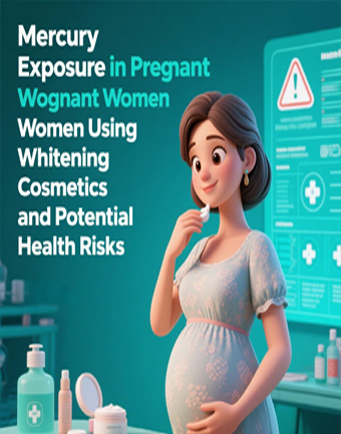Anti-Cholesterolemic Activity of Mulberry (Morus australis Poir) Ethanol Extract in Increasing HDL Levels and Inhibiting Formation of Foam Cells on Rat
Downloads
Mulberry leaves are one of the medicinal plants empirically used by people to reduce cholesterol levels. Previous study found that mulberry leaves contain flavonoids, act as cholesterol-lowering and tannins function to inhibit the absorption of food, including fat in the GI tract. The objective of this study is to determine the effect of mulberry leaf ethanol extract on increased HDL levels and to determine the inhibition of the formation of foam cells in male Wistar strain rats given the atherogenic diet. Thirty male Wistar rats were divided into six groups, which were normal group, negative control, positive control, and three groups of mulberry leaf extract at a dose of 25, 50, and 100 mg/200g BW rats, respectively. The HDL levels were measured pre- and post- treatment on days 0, 28, 35 and 42. The results showed that the most effective dose augmenting the HDL as well as inhibited the formation of aortic wall foam cell was the ethanol extract at a dose of 100 mg/200 g BW. In conclusion, mulberry leaves ethanolic extract have the potency to be developed as a natural cholesterol-lowering agent.
Amran, A. A., Zakaria, Z., Othman, F., Das, S., Al-Mekhlafi, H. M., & Nordin, N. A. M. (2011). Changes in the vascular cell adhesion molecule-1, intercellular adhesion molecule-1 and c-reactive protein following administration of aqueous extract of piper sarmentosum on experimental rabbits fed with cholesterol diet. Lipids in health and disease, 10(1), 1-8. doi:https://doi.org/10.1186/1476-511X-10-2
Chairungsi, N., Jumpatong, K., Phutdhawong, W., & Buddhasukh, D. (2006). Solvent effects in electrocoagulation of selected plant pigments and tannin. Molecules, 11(5), 309-317. doi: https://doi.org/10.3390/11050309
Dewi, Y. R., Santoso, L. M., & Tibrani, M. M. (2012). Pineapple (Ananascomosus (L.)Merr.)Juice activity test on total cholesterol and blood triglycerides of mice (Musmusculus L.) and their contribution to learning biology in high school. Skripsi. FKIP Sriwijaya University
Hariana, A. (2008). Tanaman Obat dan Khasiatnya. Jakarta: Cetakan V. Sel. Penebar Swadaya.
Hussain, M. A., Al Mamun, A., Peters, S. A., Woodward, M., & Huxley, R. R. (2016). The Burden of Cardiovascular Disease Attributable to Major Modifiable Risk Factors in Indonesia. Journal of epidemiology, 26(10), 515-521. doi: https://doi.org/10.2188/jea.JE20150178
Japardi, I. (2002). Patomekanisme Stroke InfarkAterotrombotik. Medan: Fakultas Kedokteran , Universitas Sumatera Utara.
Jia, Y.-J., Liu, J., Guo, Y.-L., Xu, R.-X., Sun, J., & Li, J.-J. (2013). Dyslipidemia in rat fed with high-fat diet is not associated with PCSK9-LDL-receptor pathway but ageing. Journal of geriatric cardiology : JGC, 10(4), 361-368. doi:https://doi.org/10.3969/j.issn.1671-5411.2013.04.007
Lamanema, M. E. L. (2005). Perbandingan Profil Lipid Dan Perkembangan Lesi Aterosklerosis Pada Tikus Wistar Yang Diberi Diet Perasan Pare Dengan Diet Perasan Pare dan Statin (The Comparison of Lipid Profile and The Progression of Atherosclerotic Lesion between Momordica Charantia Juice Dietary with and without Statin on Wistar Rats). Tesis. Program Pasca Sarjana, Universitas Diponegoro Semarang.
Lenny, S. (2006). Senyawa Flavonoida, Fenilpropanoida dan Alkaloida. Skripsi. Medan: Fakultas Matematika dan Ilmu Pengetahuan Alam, Universitas Sumatera Utara.
Mills, S., & Bone, K. (2000). Principles and practice of phytotherapy. Modern Herbal Medicine. UK: Churchill Livingstone.
Murray, RK., D.K Granner, P.A. Mayes, dan V.W. Rodwell. (2008). Biokimia Harper. Edisi 25. Jakarta: Penerbit Buku Kedokteran EGC.
Ruel, G., Pomerleau, S., Couture, P., Lemieux, S., Lamarche, B., & Couillard, C. (2006). Favourable impact of low-calorie cranberry juice consumption on plasma HDL-cholesterol concentrations in men. British Journal of Nutrition, 96(2), 357-364. doi:https://doi.org/10.1079/BJN20061814
Sawangjaroen, N., Sawangjaroen, K., & Poonpanang, P. (2004). Effects of Piper longum fruit, Piper sarmentosum root and Quercus infectoria nut gall on caecal amoebiasis in mice. Journal of Ethnopharmacology, 91(2-3), 357-360. doi:https://doi.org/10.1016/j.jep.2004.01.014
Smeriglio, A., Barreca, D., Bellocco, E., & Trombetta, D. (2017). Proanthocyanidins and hydrolysable tannins: occurrence, dietary intake and pharmacological effects. British journal of pharmacology, 174(11), 1244-1262. doi: https://doi.org/10.1111/bph.13630
Sutedjo, A. Y. (2006). Mengenal penyakit melalui hasil pemeriksaan laboratorium. Yogyakarta: Amara Books.
Syamsuhidayat, S. S., & Hutapea, J. R. (1991). Inventaris tanaman obat Indonesia. Jakarta: Departemen Kesehatan Republik Indonesia.
Uli, R. E., Satyana, R. P., Zomer, E., Magliano, D., Liew, D., & Ademi, Z. (2020). Health and productivity burden of coronary heart disease in the working Indonesian population using life-table modelling. BMJ open, 10(9), e039221. doi:http://dx.doi.org/10.1136/bmjopen-2020-039221
Valacchi, G., Belmonte, G., Miracco, C., Eo, H., & Lim, Y. (2014). Effect of combined mulberry leaf and fruit extract on liver and skin cholesterol transporters in high fat diet-induced obese mice. Nutrition research and practice, 8(1), 20-26. doi:https://doi.org/10.4162/nrp.2014.8.1.20
Wierda, R. J., Geutskens, S. B., Jukema, J. W., Quax, P. H., & van den Elsen, P. J. (2010). Epigenetics in atherosclerosis and inflammation. Journal of cellular and molecular medicine, 14(6a), 1225-1240. doi: https://doi.org/10.1111/j.1582-4934.2010.01022.x
Xu, S., Pelisek, J., & Jin, Z. G. (2018). Atherosclerosis is an epigenetic disease. Trends in Endocrinology & Metabolism, 29(11), 739-742. doi: https://doi.org/10.1016/j.tem.2018.04.007
Zeka, K., Ruparelia, K., Arroo, R. R., Budriesi, R., & Micucci, M. (2017). Flavonoids and their metabolites: prevention in cardiovascular diseases and diabetes. Diseases, 5(3), 19. doi:https://doi.org/10.3390/diseases5030019
Zhang, X., Jin, Y., Wu, Y., Zhang, C., Jin, D., Zheng, Q., & Li, Y. (2018). Anti-hyperglycemic and anti-hyperlipidemia effects of the alkaloid-rich extract from barks of Litsea glutinosa in ob/ob mice. Scientific reports, 8(12646), 1-10. doi:https://doi.org/10.1038/s41598-018-30823-w
Copyright (c) 2021 JURNAL INFO KESEHATAN

This work is licensed under a Creative Commons Attribution-NonCommercial-ShareAlike 4.0 International License.
Copyright notice
Ownership of copyright
The copyright in this website and the material on this website (including without limitation the text, computer code, artwork, photographs, images, music, audio material, video material and audio-visual material on this website) is owned by JURNAL INFO KESEHATAN and its licensors.
Copyright license
JURNAL INFO KESEHATAN grants to you a worldwide non-exclusive royalty-free revocable license to:
- view this website and the material on this website on a computer or mobile device via a web browser;
- copy and store this website and the material on this website in your web browser cache memory; and
- print pages from this website for your use.
- All articles published by JURNAL INFO KESEHATAN are licensed under the Creative Commons Attribution 4.0 International License. This permits anyone to copy, redistribute, remix, transmit and adapt the work provided the original work and source is appropriately cited.
JURNAL INFO KESEHATAN does not grant you any other rights in relation to this website or the material on this website. In other words, all other rights are reserved.
For the avoidance of doubt, you must not adapt, edit, change, transform, publish, republish, distribute, redistribute, broadcast, rebroadcast or show or play in public this website or the material on this website (in any form or media) without appropriately and conspicuously citing the original work and source or JURNAL INFO KESEHATAN prior written permission.
Permissions
You may request permission to use the copyright materials on this website by writing to jurnalinfokesehatan@gmail.com.
Enforcement of copyright
JURNAL INFO KESEHATAN takes the protection of its copyright very seriously.
If JURNAL INFO KESEHATAN discovers that you have used its copyright materials in contravention of the license above, JURNAL INFO KESEHATAN may bring legal proceedings against you seeking monetary damages and an injunction to stop you using those materials. You could also be ordered to pay legal costs.
If you become aware of any use of JURNAL INFO KESEHATAN copyright materials that contravenes or may contravene the license above, please report this by email to jurnalinfokesehatan@gmail.com
Infringing material
If you become aware of any material on the website that you believe infringes your or any other person's copyright, please report this by email to jurnalinfokesehatan@gmail.com.





